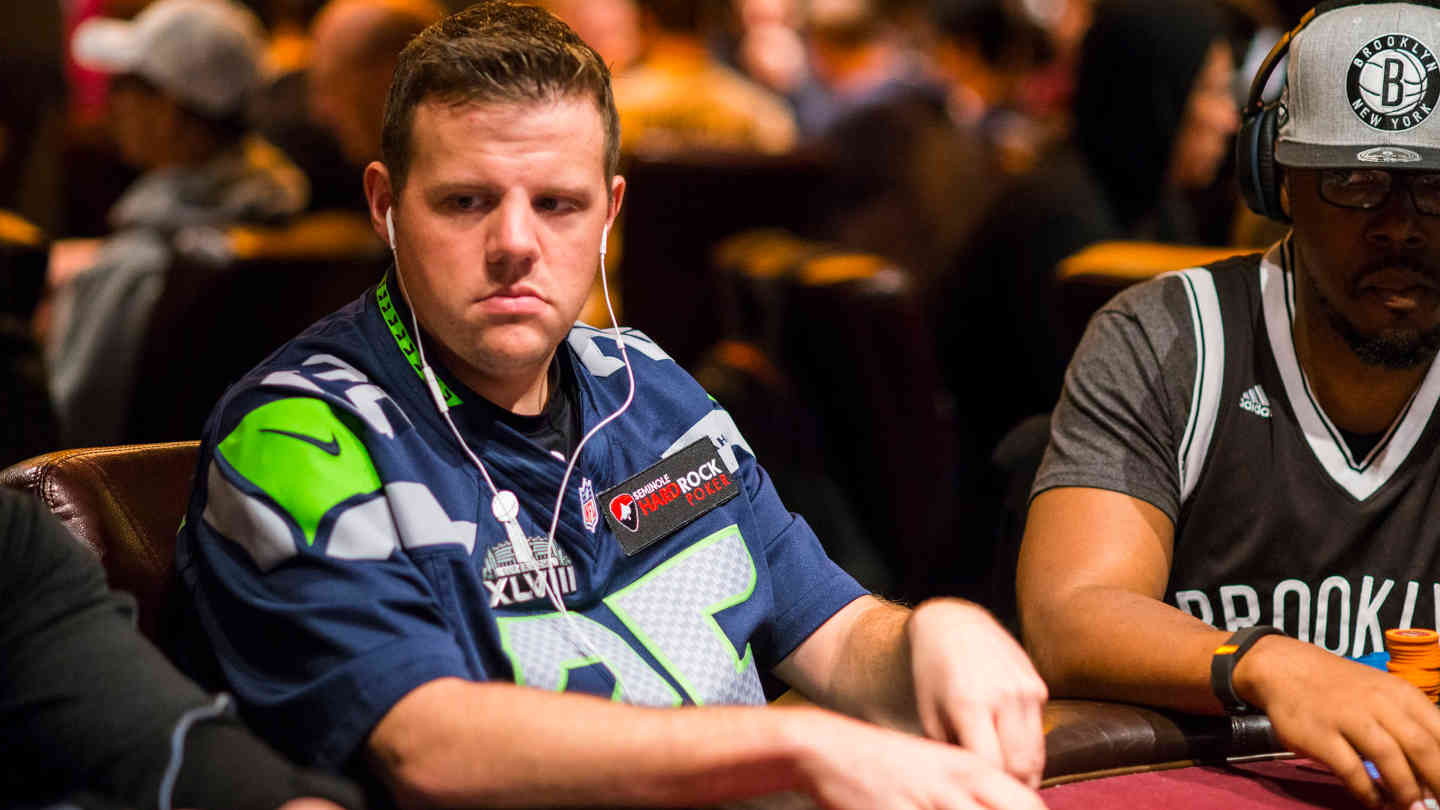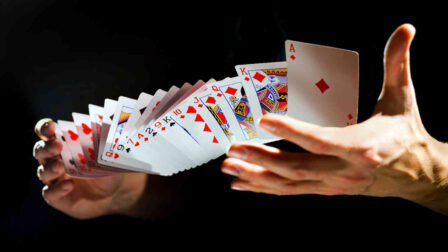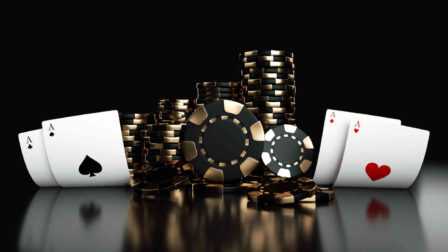Does Three of a Kind Beat Two Pair in Poker & Why?
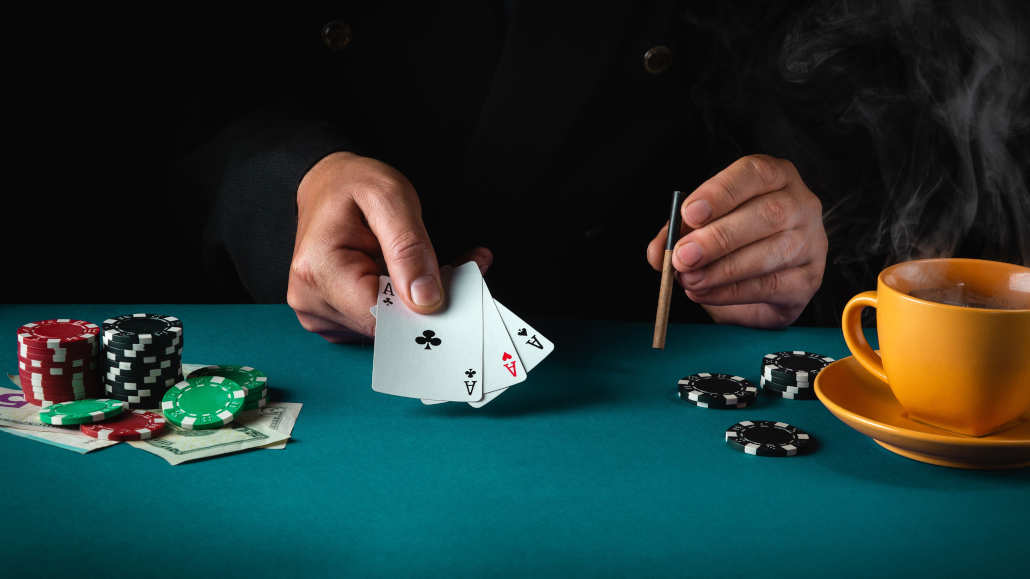
9 minutes
Last Updated: January 11, 2023
One of the questions that newbie poker players ask quite often is does three-of-a-kind beat two pair? Or is 3 of a kind better than 2 pair?
The short answer is yes: three of a kind beats two pair in poker. But why is that?
Well to find out the logic behind this and other hand rankings in poker, keep reading this article. We have prepared a detailed overview of these hands and the math behind them.
Three of a Kind in Poker
As the term suggests, a 5-card combination that consists of three cards of the same rank and two additional unpaired cards (also known as kickers) is called three of a kind.
Two examples of three-of-a-kind combinations in poker:
- J♠J♣J♦7♠2♣ – three-of-a-kind, jacks
- 5♥5♦5♠J♣Q♣ – three-of-a-kind, fives
Depending on the way in which the three-of-a-kind combination has been put together, there are two different terms that poker players use to describe this hand combination.
If the three-of-a-kind combination consists of two hole cards and one community card, players will refer to it as a set.
For example:
- Player A is holding 7♣7♠
- The board is 7♦Q♣A♣8♠9♠
The best 5-card combination that Player A can put together in this situation is 7♠7♣7♦A♣Q♣ (three of a kind 7s) with an Ace and a Q kicker).
On the other hand, if the three-of-a-kind combination has been put together using one of the hole cards and two community cards, players will refer it as trips.
For example:
- Player A is holding K♣7♠
- The board is 7♣7♦A♣5♣2♣
The best 5-card combination that Player A can put together in this situation is 7♠7♣7♦A♣K♣ (three-of-a-kind 7s with an Ace and a K kicker).
Now, you might be wondering, since Player A is using both of his hole cards to create this combination, why this combination is not called a set also?
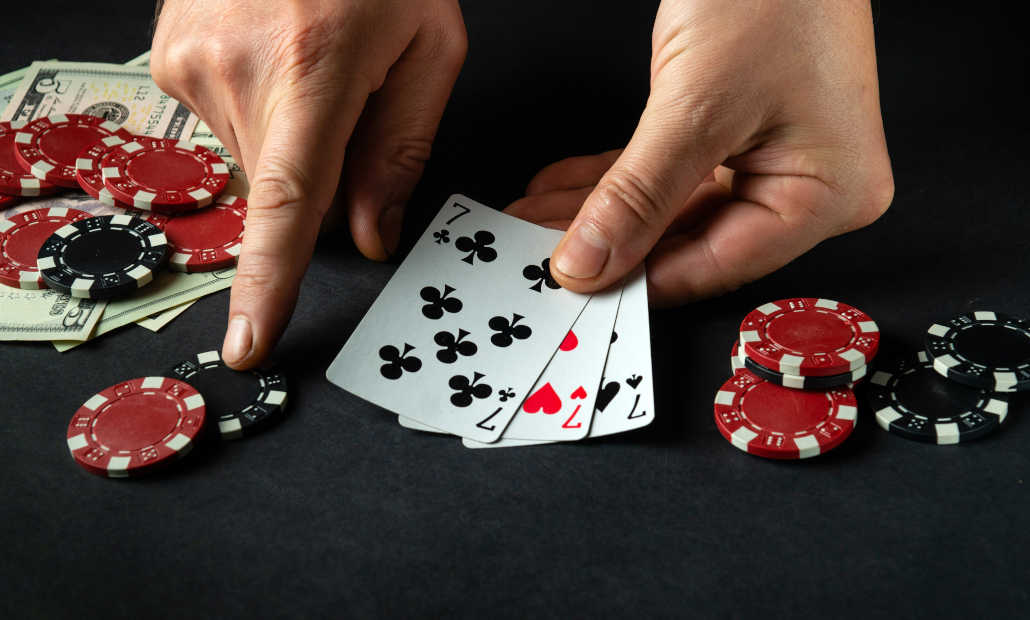
It’s because in this scenario, player A is using only one of his hole cards to make the main part of the combination (three 7s), and his other hole card (K) is only used as a kicker.
The main reason why poker players use different terms to describe the three-of-a-kind combination is that situations where a player used both hole cards to make it, it is much better hidden than in situations where there are two cards of the same rank on the board.
In other words, having a set instead of trips is much more significant. There is a lower chance your opponents will put you on three of a kind when you hold two of three cards used for the combination in your hand.
Rules for Ranking Three of a Kind Combinations in Poker
Determining which three-of-a-kind combination beats which is pretty straightforward and it requires players to follow a simple three-step process:
- The rank of a three-of-a-kind combination is determined based on the rank of the three cards
- In cases where the three cards have the same rank in both combinations, the stronger kicker is used to determine which hand wins
- Where the stronger kicker is of the same rank, the weaker kicker is used to determine which combination wins
Let's look at an example to see how these rules are applied in practice.
- Hand 1) 7♠7♦7♥A♠K♥ vs. Hand 2) 6♠6♣6♦A♠K♥
In this case, the situation is pretty clear. Based on the rank of the cards that make the main part of the combination (three of a kind) Hand 1 outranks Hand 2.
- Hand 3) Q♠Q♦Q♥K♠10♠ vs Hand 4) Q♠Q♦Q♣10♠J♦
In this case, the central part of both combinations (three of a kind) is made of cards with the same rank, so the rule of the higher kicker is applied. In Hand 3 the higher kicker is the K, while in hand 4 the higher kicker is the J.
Since a K outranks a J in poker, Hand 3 outranks Hand 4 in this specific situation.
- Hand 5) 9♠9♦9♥A♠7♦ Hand 6) 9♠9♦9♣A♠10♦
Finally, in this situation, we have two combinations in which the three of a kind and the higher kicker are of the same rank. Thus, we need to use the rule of the lower kicker to determine which hand wins.
In Hand 5, the lower kicker is a 7, while in Hand 6, the lower kicker is a T. Since a T outranks a 7 in poker, Hand 6 outranks Hand 5.
The Total Number of Three-of-a-Kind Combinations in Texas Hold’em
The standard deck used for Poker consists of 52 cards divided into 4 suits (hearts, diamonds, spades, and clubs). Each suit contains 13 different card ranks (A, K, Q, J, T, 9, 8, 7, 6, 5, 4, 3, 2).
This means that there are:
- 54,912 different three-of-a-kind combinations
- 858 different three-of-a-kind ranks
Note that each three-of-a-kind combination does not only consist of three cards of the same rank but also of two additional kickers. It is the different kickers that increase the total number of different three-of-a-kind combinations significantly.
Two Pair in Poker
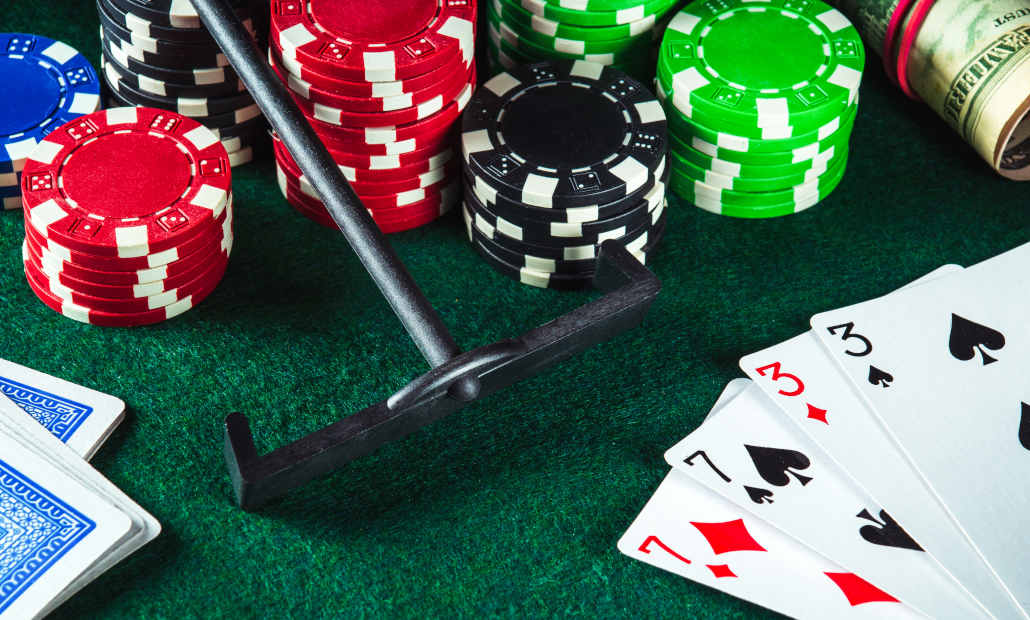
A 5-card combination that consists of two cards of the same rank, two cards of another rank, and a kicker is called two pair in poker
Two examples of two pair combinations in poker:
- 7♠7♦5♠5♦9♣ – two pair, sevens and fives, with a nine kicker
- 8♣8♦J♣J♥7♠ – two pair eights and jacks, with a seven kicker
When it comes to putting together two pair in poker, there are several ways in which you can make this combination.
The first way is to pair both of the hole cards with the community cards, for example:
- Player A is holding Q♠K♣
- The board is Q♦K♦5♠4♣2♣
In this case, the best 5-card combination that Player A can make is K♣K♦Q♠Q♦5♠ – two pair, kings and queens, with a 5 kicker.
The second way to make a two-pair combination in poker is to hold a pocket pair and there is a pair on the board, for example:
- Player B is holding 8♠8♣
- The board is 6♦6♦A♠4♣2♣
In this example, the best 5-card combination that Player B can make is 8♠8♣6♦6♦A♠ – two pair, eights and sixes, with an A kicker.
The third way to put together a two-pair combination is to pair one of the hole cards with one of the community cards with the board containing two cards of the same rank.
For example:
- Player C is holding 9♠8♦
- The board is 9♦6♠6♣4♦2♦
In this example, the best 5-card combination that Player C can make is 9♠9♦6♠6♣8♦ – two pair, nines and sixes, with an 8 kicker.
The fourth way to make two pair is by playing the board (in situations where there is a two pair combination in the community cards).
For example:
- Player D is holding A♦8♣
- The board is Q♠Q♦10♠10♦4♣
In this situation, the best 5-card combination that Player D can make is Q♠Q♦10♠10♦A♦ – two pair queens and tens with an A kicker.
Rules for Ranking Two-Pair Combinations in Poker
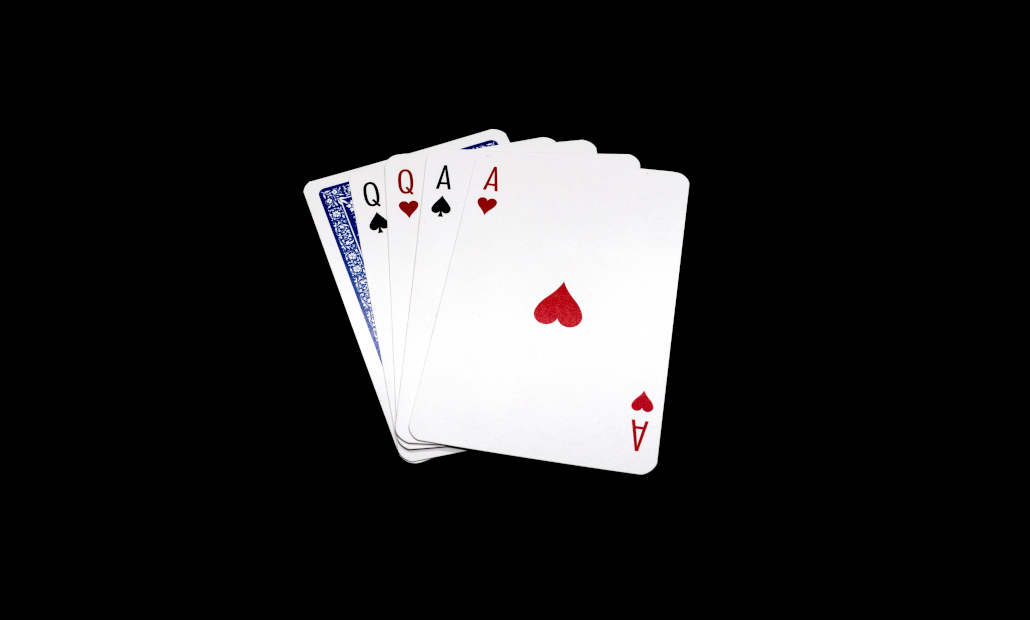
In poker, there are three main rules for ranking two-pair combinations:
- Two-pair combinations are ranked based on the rank of the highest pair in the combination
- In cases in which the rank of the highest pair is the same, the ranking of the lower pair is used to determine the winning combination
- Finally, in situations where the ranks of the higher and the lower pair are identical in both combinations, the rank of the kicker comes into play
Now let's look at how these rules are applied in practice.
Example 1:
- Hand 1) A♠A♦2♠2♦7♠ (aces and twos with a 7 kicker) vs.
- Hand 2) Q♠Q♦J♠J♦7♠ (queens and jacks with a 7 kicker)
In this example we need to apply the first rule since the rank of the highest pair in both combinations is different. With this said, Hand 1 outranks Hand 2 because the rank of the highest pair in Hand 1 (A) outranks the rank of the highest pair in Hand 2 (Q).
Example 2:
- Hand 3) J♠J♦8♠8♥A♦ (jacks and eights with an ace kicker) vs.
- Hand 4) J♣J♦6♣6♥A♦ (jacks and sixes with an ace kicker)
Since the rank of the higher pair in both of these hands is the same (J), we need to apply the second rule and use the rank of the lower pair to determine the winner.
Because the rank of the lower pair in Hand 3 (8) outranks the rank of the lower pair in Hand 4 (6), Hand 3 outranks Hand 4.
Example 3
- Hand 5) 9♠9♦7♠7♥K♦ (nines and sevens with a king kicker) vs
- Hand 6) 9♣9♦7♣7♥A♦ (nines and sevens with an ace kicker)
Finally, if both the higher and the lower pair have the same rank in both two pair combinations, third rule is applied. In this case, the kicker in Hand 6 (A) outranks the kicker in Hand 5 (K), and thus Hand 6 outranks Hand 5.
The Total Number of Two Pair Combinations in Poker
Based on the standard deck used for poker, which consists of 52 cards divided into 4 suits (diamonds, clubs, spades, hearts) with each of the suits having 13 different cards ranks (A, K, Q, J, T, 9, 8, 7, 6, 5, 4, 3, 2) we can make the following calculations:
- There are 123,552 possible two pair combinations in poker
- There are 858 unique ways to make a two pair combination in poker
- The odds of putting together a two pair combination in any given hand are around 20-to-1
Based on the information above, we can see that two pair is the second most common paired hand in Texas Hold’em.
Does a Three of a Kind Beat Two Pair in Poker?
As you can see from the table below, hand rankings in poker are based on frequency, which means the lower the odds for putting together a combination, the stronger the combination.
This is why the Royal Flush which only has 4 possible combinations is the strongest hand in poker.
| Hand | Combinations | Probability | Odds |
| Royal Flush | 4 | 0.000154% | 649,739-to-1 |
| Straight Flush | 36 | 0.00139% | 72,192-to-1 |
| Four of a Kind | 624 | 0.02401% | 4,164-to-1 |
| Full House | 3,744 | 0.1441% | 693-to-1 |
| Flush | 5,108 | 0.1965% | 509-to-1 |
| Straight | 10,200 | 0.3925% | 254-to-1 |
| Three of a Kind | 54,912 | 2.1128% | 46-to-1 |
| Two Pair | 123,552 | 4.7539% | 20-to-1 |
| One Pair | 1,098,240 | 42.2569% | 1.37-to-1 |
When it comes to three of a kind, there are 54,912 possible combinations of this hand which means that the odds of putting it together in any given hand are 46-to-1 or 2.1128%.
On the other hand, there are 123,552 possible combinations of two pair and the odds of making this combination in any given hand are 20-to-1 or 4.7539%.
Since we already know that the hand ranking rules in poker are based on frequency, we can see why three-of-a-kind beat two pairs.
The odds of putting together a three-of-a-kind combination are much lower than the odds of making a two pair combo.












